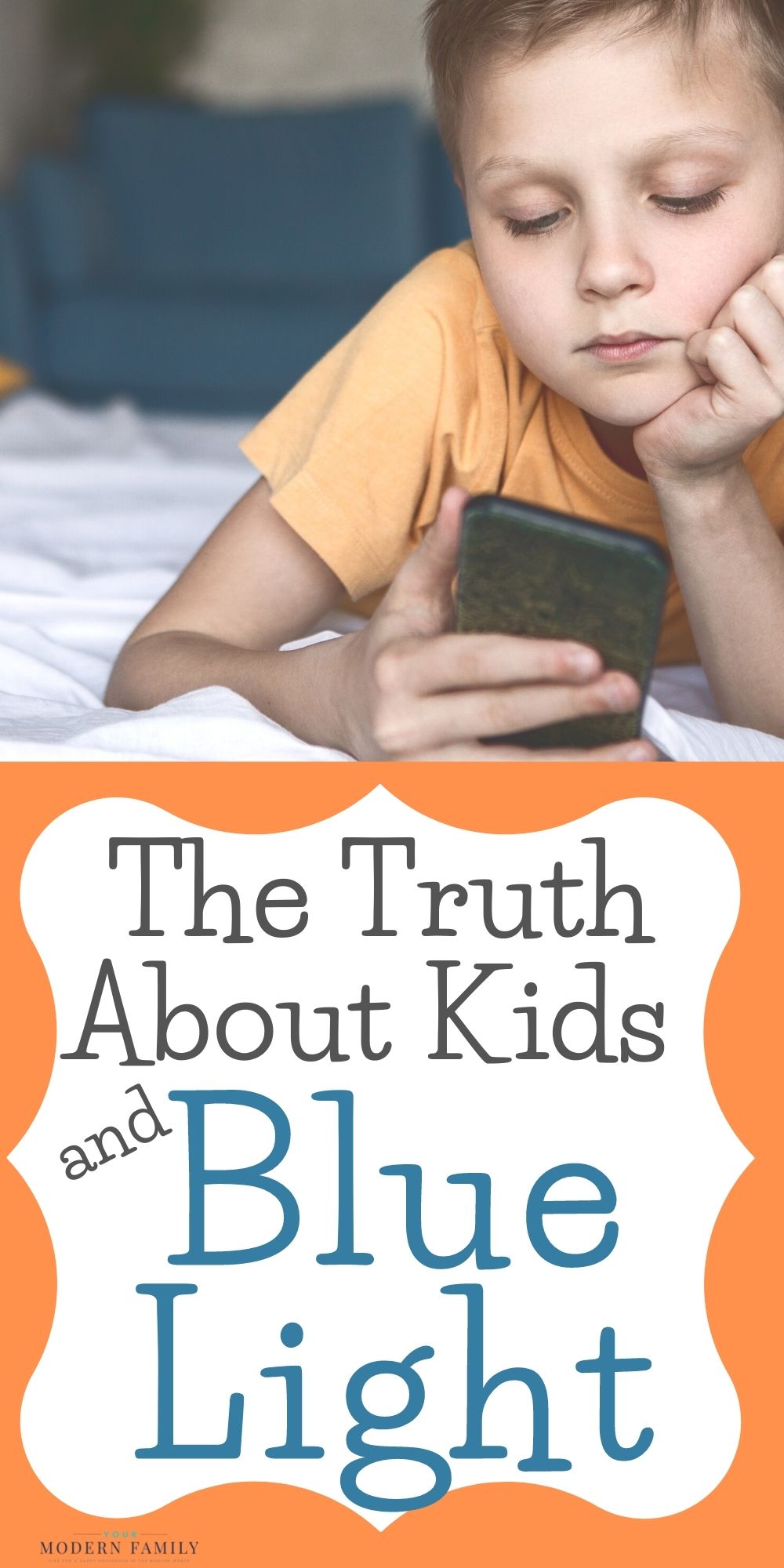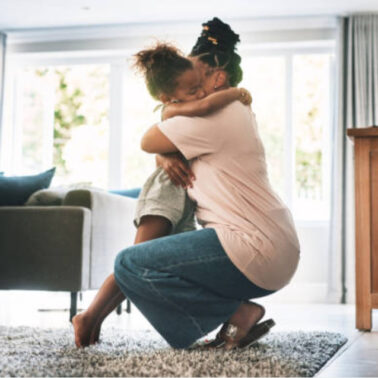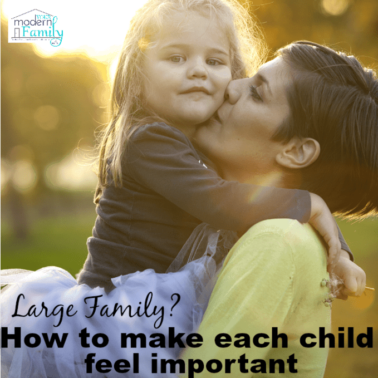This post may contain affiliate links. Please read our disclosure policy.
Our kids’ daily screen time has dramatically increased over the past six months. When our kids were taking their classes online from home, we learned to adapt out of necessity.
We’ve added a blue light blocking screen protector to each of our kids’ devices (we went with EyeJust Screen Protectors), we’ve established rules about screen time, and we’ve adjusted our routines to fit our new schedules. With the help of EyeJust, we’ve put together some statistics and other information about how best to protect our health during this time.
It’s so important to set healthy habits for children and screen time.
Children all over the world spend a lot of time online right now. In fact, because of e-learning this year, a study by Learning Heroes reports that kids are spending over half their waking hours on devices.
“Reports indicate that 52% of elementary and high school students will learn online only. Another 19% are learning via a hybrid model of in-person and online classes, due to concerns caused by COVID-19.” 72% of mothers recently surveyed are concerned about screen time limits and worried about “how much screen time is too much.” – eyejust.com
Students are online for e-learning: class calls, researching topics, working on reading/math skills, completing homework assignments, reading books, or even participating in an art class.
EyeJust Screen Protector
The extra screen time is the reason that we are talking about the importance of setting boundaries and helping to protect our children by using EyeJust’s blue light blocking screen protector.
Gone are the days when 30 minutes on screens during the school week was considered to be a special treat. Now, our kids are spending three hours (or more) on screens every day- and it’s mandatory. All of this time online can lead to eyestrain + irritation, headaches, and overall lack of focus if we aren’t careful.
If you’re like me, you’ve worked hard to limit their screen time exposure, encouraging them to do offline, screen-free activities instead. You’ve probably read studies about the scary truth that links childhood depression and anxiety with electronic use.
“Adaptability to change is itself a hallmark of successful education.”
This quote by Peter Hilton reminds us that when the world changes, we must adapt to the change. That means learning to understand and embrace new ways of learning.
Charles Darwin reminded us that “It is not the strongest of the species that survives, nor the most intelligent. It is the one that is most adaptable to change.”
SO, how do we embrace change in this age of technology while still keeping our children balanced and safe?
We know that electronics have a huge benefit. They provide us with answers, let us connect, and allow us to look all around the world from our living room couch. However, like anything, too much of a good thing is just too much.
56% of children’s awake time involves a screen. – EyeJust
With children being online so much for e-learning, it is important to do our part.
As parents, we can set boundaries for those times when they are not participating in e-learning, put EyeJust blue light screen protectors on their devices, have them do their work or chores before using screens during free-time, give them ‘no-tech’ times or days, etc.
EyeJust has some very eye-opening findings. They shared Common Sense’s 2019 study, The New Normal: Parents, Teens, Screens, and Sleep & shared some of those statistics:
- 36% of teens wake up to check their mobile devices at least once during the night (Research shows that this kind of disrupted sleep has a negative impact on kids’ well-being and even academic performance.)
- 68% of kids sleep with their phones within arms reach or actually in bed.
- 40% of teenagers and 26% of parents said they used a mobile device, such as a smartphone or a tablet, within five minutes of going to sleep.
- Teenagers were more than twice as likely as adults to sleep with a phone in bed, with 29% of teenagers and 12% of adults admitting to the practice.
- 52% of parents said they spent too much time on mobile devices, nearly twice as many as in 2016. Among teenagers, only 39% said they spent too much time on devices, a steep decline from 61%.
- The share of parents who felt “addicted” to their devices rose to 45% from 27%. The share of teenagers who said the same fell to 39% from 50%.
More screen time also means more blue light exposure.
Yes, it’s true that more screen time means more blue light exposure. I’ve been doing a lot of research on blue light. We can do our part to filter out blue light with things like adding blue light screen protectors to our devices. For example – the computer screen. We can relieve computer eye strain by understanding what blue light is and what steps to take next.
What is blue light?
First, it’s important to know that sunlight has red, orange, yellow, blue, and green rays of light. When these colors are combined, they create “white light” also known as sunlight. However, the rays that are more on the blue side have more energy. These are referred to as blue light (HEV, high energy visible light).
“Not all colors of light have the same effect. Blue wavelengths—which are beneficial during daylight hours because they boost attention, reaction times, and mood—seem to be the most disruptive at night. And the proliferation of electronics with screens, as well as energy-efficient lighting, is increasing our exposure to blue wavelengths, especially after sundown.” [3]
What emits blue light?
While the sun is a large source of blue light (UV rays), there are many man-made sources, including the following:
- fluorescent lights
- LED lighting
- flat-screen TVs
- laptops
- computers
- smartphones
- tablets
- gaming devices
- etc…
What does blue light do?
Blue light is both beneficial and dangerous, depending on how much you get, as well as the source of the blue light.
Benefits of blue light:
When blue light comes from the sun, it can help us feel alert, have better memory and cognitive function.
It can even put us in a better mood. It regulates circadian rhythms (our body’s natural sleep & wake cycle), so it helps us know when to sleep and when to wake.
Dangers of blue light:
It was our son’s neurologist who first introduced us to the dangers of blue light. When we were at an appointment about his sleep disorder, his doctor told us to filter the blue light and eliminate as much blue light as possible in the hours before bedtime.
Blue Light Has Been Proven To Disrupt Sleep.
“It has been well established that blue light can have negative health effects, particularly with circadian rhythm and decreasing melatonin. EyeJust can block a certain amount of HEV blue light without changing the way the screen looks while at the same time can decrease the negative effects of blue light on the eye.”
— Dr. Jordan Conger and Dr. Andrew Smith, Department of Ophthalmology at University of California Irvine
“Clinically, overexposure to blue light can accelerate signs of aging…
worsening the wrinkles, fine lines, uneven skin tone, dullness, and hyperpigmentation in a similar manner which is frequently associated with UV radiation and chronic sun exposure.” — Dr. Anetta Reszko, Dermatologist, Weill Cornell
- Overexposure to blue light is harmful to sleep, eyes, and skin.
- It causes eye fatigue and may lead to long term eye damage
- It prematurely ages the skin, similar to the sun’s harmful UVA rays.
- “Excessive screen time is associated with delays in development” [1]
- “Using a smartphone after bedtime adds up to a lack of sleep, poor mental health, and a higher rate of suicidal behavior in teenagers.” [2]
- Screen time & blue light can lead to headaches.
- Blue light from screens has been linked to behavioral problems in children.
How can you filter the blue light?
You can find ways to block too much blue light. I’ve looked into many blue light screen protectors and I’ve found that EyeJust is the best anti blue light screen protector. Are blue light screen protectors effective? Yes! We’ve found that they make a big difference.
What is a blue light screen protector?
Unlike kid’s blue light glasses or adults’ blue light blocking glasses, the screen protector goes onto your device just like a normal screen protector. We don’t need to do anything or wear anything once the screen protector has been applied.
Do Blue Light Screen Protectors Work?
Yes! The EyeJust screen protector not only has impact protection like other screen protectors, but this anti-glare, smudge-proof & scratch-resistant screen protector also blocks blue light. It is even antimicrobial, making it a germ-free surface.
EyeJust is the strongest tempered glass screen protector that I’ve tried. They are well known and they have great reviews on sites that we trust.
We have EyeJust screen protectors on our laptops, desktop, phones, iPad air, iPad pro, Nintendo switch, and every other device that we have.
The anti-blue light screen protector for desktop computers was as easy to apply to our computer as it was to apply to our son’s Nintendo switch. (I was excited to see a Nintendo Switch blue light screen protector – it works really well!)
(application process)
EyeJust screen protectors do not change the aesthetic of the device. Whether you get the blue light screen protector iPad version or the blue light screen protector iPhone version or any other version of these blue light screen protectors, they are all going to look the same on your device. You won’t notice a difference, except in the way that you feel.
Benefits of EyeJust Screen Protectors:
From my phone to my laptop, I know that I’m protected 24/7 with EyeJust on my devices. If I read a book on my laptop before bed, I know that the screen protector is working. Adding a blue light computer screen protector makes such a difference.
It works to filter out blue light and relieve computer eye strain to help you sleep.
No matter when we are on our screens, EyeJust is working hard, protecting our eyes and our children’s eyes… and we don’t have to remember to put on glasses first.
What can you do to limit blue light right now?
While you are waiting for your EyeJust screen protectors to arrive, you can do a few things to help right now.
While this will not be your typical year, as circumstances have changed for school and work, we can do our best to make it a great year. The way that we adapt sets a tone for our year… and life.
“Adaptability is about the powerful difference between adapting to cope and adapting to win.” ~M. McKeown“
Yes, screen time is inevitable for most families, but we can adjust and learn.
“A wise man adapts himself to circumstances, as water shapes itself to the vessel that contains it.” – unknown
Sources:















Hello! Thank you very much for such an informative and really useful article, for those people who are worried about the health of their children’s eyes or the health of their eyes. I really do not understand those parents who do not control how much time the child spends at the phone or computer screen, because this definitely affects the quality of vision. I noticed that the less I sit at the computer, the more my sight is shot and the better I see, and when I return to the usual screen time, I again begin to see worse.